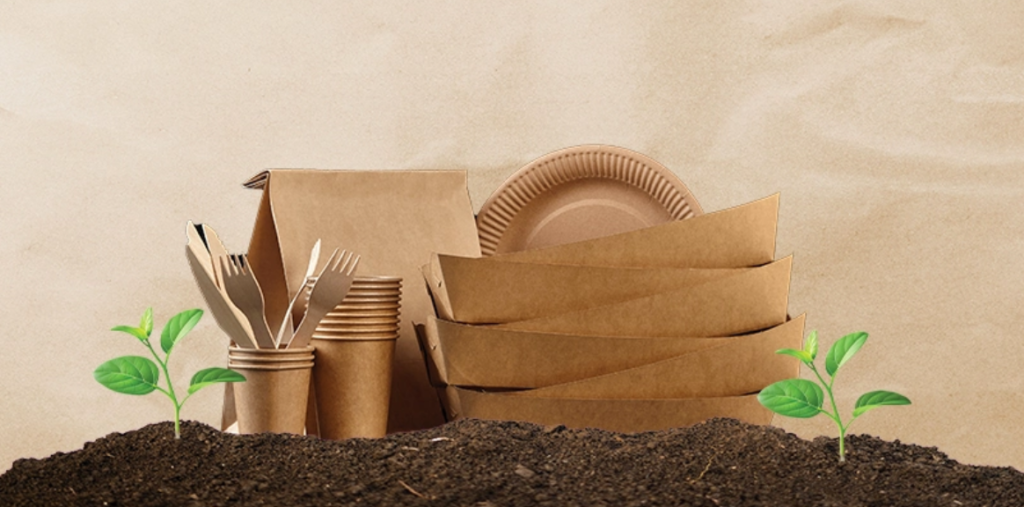
In a world increasingly aware of the need to protect the environment, the food packaging industry is undergoing a significant transformation with eco-friendly packaging, or biopackaging.
Made from sustainable materials like natural fibers, fruits, and vegetables, this type of packaging is gaining popularity due to its ability to reduce environmental impact, among other benefits for the planet.
Current trends in eco-friendly packaging highlight its benefits and the innovation behind these products, which for food manufacturers represent both an opportunity and a challenge, inviting them to align with a sustainable production chain that guarantees environmental responsibility.
Table of contents
TRENDS IN ECO-FRIENDLY PACKAGING
BENEFITS OF ECO-FRIENDLY PACKAGING
SIX OBSTACLES FACING MANUFACTURERS
HOW TO OVERCOME BARRIERS
TRENDS IN ECO-FRIENDLY PACKAGING
Eco-friendly packaging is defined as packaging aimed at reducing the amount of polluting waste produced. These are made from biodegradable materials or can be reused. In addition to requiring less water and raw materials for their manufacture, they reduce the carbon footprint by using fewer petroleum-based materials.
- Biodegradable and Compostable Materials
These packages are designed to naturally decompose without leaving toxic residues, including materials such as bamboo fiber, fruit peels, and cellulose pulp, all lightweight and durable. Some can be transformed into bioplastics derived from plants like corn or sugarcane.
Among successful cases of this type of packaging are banana packaging, an innovative project developed in Ecuador that uses banana fibers to create sustainable packaging. Another example is apple pulp containers, a development carried out in Germany that, besides using fruit pulp, also takes advantage of juice industry waste, promoting resource reuse.
- Edible Packaging
These packages are made from natural ingredients and are safe for human consumption. Edible packaging can be made from seaweed, milk proteins, or potato starch, providing an ingenious solution to reduce packaging waste.
- Bioplastics Technology
Bioplastics are made from renewable resources like corn starch, vegetable oil, or sugarcane residues. These materials are not only biodegradable but also have properties similar to conventional plastics in terms of durability and versatility.
BENEFITS OF ECO-FRIENDLY PACKAGING
Ignacio Parada, CEO of BioElements, a Chilean company that aims to be an eco-friendly alternative to conventional plastic, said: “Without intervention, there could be more plastic in our oceans than fish by 2050. Therefore, the inclusion of eco-friendly packaging in the food sector is a clear differentiator and is becoming a competitive advantage for triple-bottom-line companies.”
SOME BENEFITS INCLUDE:
- Reduction of carbon footprint, which positively impacts energy consumption, greenhouse gas emissions, and plastic waste generation.
- Promotes the circular economy, as materials decompose into nutrients for the soil, preventing the accumulation of waste in the oceans.
- A “plus” for brands, as food businesses express their commitment to the environment in a market where consumers increasingly value sustainable practices.
Parada emphasized: “It’s not just about selling products but about processing, researching, and producing materials that can come into contact with food without causing any harmful effects. Packaging should no longer be seen solely as a means to wrap things or as a transportation medium; today, it must be viewed as an end in itself.”
SIX OBSTACLES FACING MANUFACTURERS
Despite the numerous benefits of eco-friendly packaging, food manufacturers face several barriers to its widespread adoption. These challenges can be technical, economic, and related to consumer perception.
- High Production Costs. There is a trend that eco-friendly materials are more expensive than conventional plastics, possibly because their manufacturers haven’t integrated economies of scale.
- Switching to eco-friendly packaging production requires the setup of new infrastructure, which may necessitate adjustments to existing packaging lines, resulting in significant investment.
- Some biodegradable materials may have a shorter shelf life, which can affect the cost of inputs, storage, and logistics.
- Some biodegradable and compostable materials may have lower resistance to handling and extreme conditions, posing challenges in the supply chain.
- Regulatory requirements may be stringent when it comes to biopackaging, requiring food producers to obtain and demonstrate certifications, which can be complex and costly.
- Educating consumers to raise awareness and change their perception of the quality and durability of packaging is a matter of time, and may also require them to accept higher prices compared to traditional packaging, which could affect demand and limit companies’ ability to offset additional costs.
HOW TO OVERCOME BARRIERS
- Introducing biopackaging into the food industry requires packaging manufacturers to overcome some barriers, which directly impacts their buyers.
Recommendations:
- Investing in research and development will help improve packaging properties and reduce material costs.
- Encouraging the formalization of alliances that bring together eco-friendly material suppliers to increase their business capabilities and inject technologies.
- Taking advantage of government incentives and subsidies that promote the implementation of sustainable practices.
- Promoting consumer education to increase demand for consumption, encouraging their willingness to pay for it.
The transition to eco-friendly packaging in the food industry is a trend that not only benefits the environment but also adds value to brands and meets the demand of conscious consumers. Today, it remains a challenge that requires the cooperation of all players in the supply chain, as well as a firm commitment to sustainability and innovation.
This adoption is not just a sustainable choice but an urgent necessity to contribute to a cleaner and healthier world, for the preservation of our planet for future generations.
Article Credit: abasto